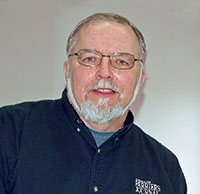For a long time, I’ve thought good farriers often don’t get enough credit for the observation skills and good judgment they must develop in order to do their jobs well.
A good example of this involves farriers who provide hoof care for foals.
In an article that will appear in the July/August issue of American Farriers Journal, Technical Editor Red Renchin, a member of the International Horseshoeing Hall Of Fame, touches on this as he explores the basics of using extensions to tackle foal deformities.
Reviewing the story, it’s easy to see that working with problem foals is no job for a novice. I gained a better understanding of why breeding farms place a high value on relationships with farriers who are experienced at working with foals.
Renchin makes it clear that experience and a trained eye are key. To begin with, at least some degree of deviation isn’t really all that abnormal. Most foals are born with a toed-out stance. Most often, these will self correct, sometimes in just a few hours and more in a few days.
To Fix Or Not To Fix?
Many deviations may correct with very conservative treatment, including modification in environment, exercise, diet and perhaps some light trimming. So much of the time, the best thing is to do little or nothing.
But serious deviations need to be identified quickly, because the window for correction isn’t very big. A farrier will often be the first hoof-care professional who sees a foal. Renchin says seeing some deviations should sound “a big alarm in your head,” urging the owner or barn manager to bring in a veterinarian as soon as possible.
Need a few more complications? How about the fact that if you over-correct, apply your corrections too soon, or leave them in place too long, you can do more harm than good. And let’s throw in the fact that there are certain deformities that are simply not correctable at all.
So, let’s see. All the farrier has to do is be able to see the early signs of a deviation, recognize those that will self correct, recognize those that won’t, while distinguishing between those that can be corrected and those that can’t.
There are still a few other things that need to be recognized, of course, such as what type of deviation it is, whether it’s skeletal or soft-tissue in nature and what kind of extension, splint, or wrap will do the most good.
Get Some Help
As I mentioned earlier, big breeding operations recognize the importance of regular and early hoof care for foals that may sell at auction for thousands of dollars. But it’s not unheard of for a novice farrier to be asked to look at a newborn foal at a small barn or stable where an owner may have only a few horses.
If you do find yourself in that kind of a situation, don’t get in over your head. Reach out to a mentor or more experienced veterinarian or farrier. When you’re starting out in any field, it can be hard to tell a client you need some help, but a good client will appreciate your honesty. And asking for help isn’t as tough as having to admit to a client that a foal will never be 100% because of something you did — or didn’t — do.







